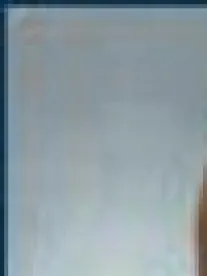In a case of first impression, a divided U.S. Court of Appeals for the Federal Circuit panel ruled that an exclusion order based on a violation of Section 337 may not be predicated on a theory of induced infringement where direct infringement does not occur until after importation of the accused article. Suprema, Inc. and Mentalix, Inc. v. International Trade Commission, Case No. 12-1170; -1026; -1124 (Fed. Cir., Dec. 13, 2013) (O’Malley, J., joined by Prost, J.) (Reyna, J. dissenting).
Section 337 allows the International Trade Commission (the Commission) to bar “the importation into the United States, the sale for importation, or the sale within the United States after importation by the owner, importer or consignee, of articles that infringe a valid and enforceable United States patent… .” Suprema and Mentalix were accused of violating § 337 by the importation of optical scanners that the complainant, Cross Match Technologies, accused of infringing its patent. The claim at issue recited a method for capturing and processing a fingerprint image. Cross Match conceded that at the time of importation Suprema’s scanners did not infringe the claim, and only did so after combination with software in the United States. Cross Match also conceded that the scanners had substantial non-infringing uses. The Commission nevertheless found that Mentalix directly infringed the claim by using its software in combination with Suprema’s scanners, and that Suprema had induced infringement by being willfully blind to the Cross Match patent and encouraging Mentalix’s activities. The Commission issued a limited exclusion order and cease and desist order to Suprema, and a cease and desist order to Mentalix. Suprema and Mentalix appealed.
On appeal, Suprema alleged that it does not import “articles that … infringe” as required under § 337(a)(1)(B)(i). Analyzing the statute, the panel majority found that the clear language of the statute limited the Commission’s authority solely to “articles that … infringe a valid and enforceable United States patent …”, and that, therefore, the focus should be on the infringing nature of the articles at the time of importation. The panel majority also found that the statute supported this analysis by expressly stating that if a violation was found, the Commission “shall direct that the articles concerned, imported by any person violating the provision of this section, be excluded from entry into the United States …” (emphasis added). Thus, the panel found that any exclusion order must necessarily be based on the infringing nature of the goods when they are imported.
The panel then turned to § 271 of the Patent Act and explained that, unlike direct and contributory infringements, which tie prohibited conduct to an article, induced infringement under § 271(b) is instead focused on the conduct of the inducer. Combining these statutory analyses, the panel majority concluded that “the statutory grant of authority in § 337 cannot extend to the conduct proscribed in § 271(b) where the acts of underlying direct infringement occur post-importation … . Prior to the commission of any direct infringement, there are no ‘articles that … infringe’—a prerequisite to the Commission’s exercise of authority under § 337(a)(1)(B)(i).”
The panel rejected Cross Match’s position that in two earlier cases, Kyocera Wireless v. International Trade Commission (see IP Update, Vol. 11, No. 11) and Alloc v. International Trade Commission, the Federal Circuit had upheld exclusion orders based on similar facts. The panel noted that in Kyocera, the accused products infringed when imported into the United States, and therefore exclusion under an inducement theory was possible, and in Alloc, there was no challenge to the Commission’s authority over inducement claims. Finally, the panel rejected the Commission’s position that “articles that … infringe” can involve any type of infringement, whether direct, contributory or induced, pointing to its decision in In the Matter of Certain Electronic Devices, Inv. No. 337-TA-724. Instead, the panel noted that while the Commission could issue an exclusion order for inducement where the product itself directly infringed when imported, it could not “invoke inducement to ban importation of articles which may or may not later give rise to direct infringement … based solely on the alleged intent of the importer.” While the panel noted that an agency’s interpretation of its enabling statute is entitled to Chevron deference in cases where the statute is ambiguous, the statutory language here was clear and therefore no deference to the Commission’s interpretation was required.
Judge Renya, in dissent, argued that the majority decision ignored the purpose of § 337 as a trade statute designed to provide relief from acts that lead to the importation of articles that will harm a domestic industry by infringing a patent and cited to a string of cases supporting the Commission and Federal Circuit’s decades-long practice of finding and affirming § 337 violations in cases where infringement did not occur until after importation. The dissent argued that there was nothing in the statute that indicated Congress intended to prohibit the Commission from investigating and acting on acts of inducement that led to infringement; specifically, that because the statute encompassed sales after importation that can give rise to infringement, “[a]n article that is not in an infringing state at the moment of importation can still form the basis of a Section 337 violation if its importation is tied to conduct giving rise to infringement liability.” The dissent warned that the panel’s opinion essentially eliminated § 337 liability for infringing method claims, other than product-by-process method claims, and would enable circumvention of § 337 by, for example, importing disassembled components of an infringing machine, or an article capable of performing all but one of the steps of a patented method and incorporating the final step in the United States. Finally, the dissent noted that to the extent there were concerns that an inducement theory could lead to overbroad exclusion orders that barred legitimate activity, the Commission typically allowed parties to certify that the articles being imported did not infringe and therefore were not covered by the exclusion order.
Practice Note: By barring the use of § 337 to exclude products based solely on the intent of the importer instead of the nature of the products itself, the Federal Circuit has put future complainants on notice that they must select patent claims carefully to ensure the asserted claims are infringed at the time of importation and do not depend on additional acts after importation.
In a case of first impression, a divided U.S. Court of Appeals for the Federal Circuit panel ruled that an exclusion order based on a violation of Section 337 may not be predicated on a theory of induced infringement where direct infringement does not occur until after importation of the accused article. Future ITC complainants are now on notice that they must select patent claims, especially method claims, carefully to ensure the asserted claims are infringed at the time of importation and do not depend on additional acts after importation.




 />i
/>i


